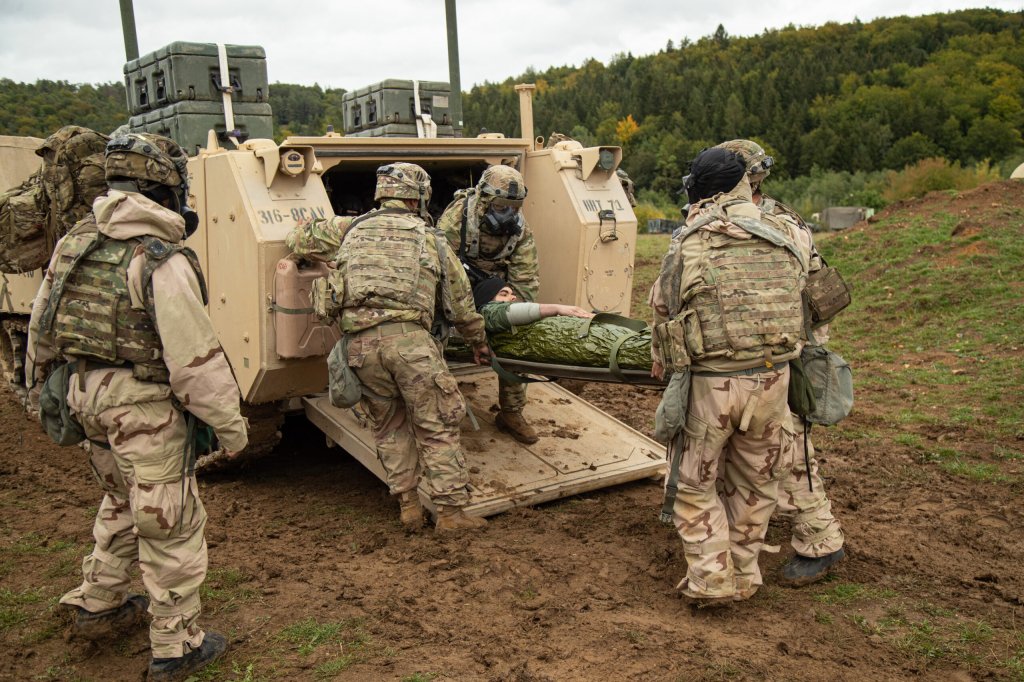

Becoming a battlefield lifesaver as a combat medic is no easy task. Imagine you’re standing on a dusty training field somewhere in the Middle East. The sun beats down on you, and the sound of gunfire echoes in the distance. Amidst the chaos, a group of combat medics is hard at work, honing their skills and preparing for the worst.
You watch as they move quickly and decisively, assessing injuries and providing medical care to simulated casualties. They work together, relying on their training and expertise to save lives in a challenging and unpredictable environment.
As you watch, you can’t help but wonder about the training and preparation that goes into becoming a combat medic. Training is divided into three phases that build on each other to develop the skills necessary to provide lifesaving medical care in combat situations.
As you observe the combat medics in action, you realize the incredible dedication and commitment required to become a combat medic. Not only do they undergo rigorous training, but they also receive ongoing professional development opportunities. That means they always stay up-to-date on the latest medical advancements and techniques.
In the end, it’s their training, expertise and commitment to saving lives that makes combat medics such a vital piece of the military healthcare system. They are the backbone of medical care on the frontlines, risking their own lives to save the lives of others. Their courage and expertise ensure the safety and well-being of our troops and play a crucial role in the readiness of our armed forces in the face of future conflicts.

Training for Reality
The first phase, the 16-week Basic Medical Technician Course (BMTC), covers the fundamentals of medical care. Trainees learn basic anatomy and physiology. This week teaches medics how to take vital signs and how to administer medication. You’ll also learn how to perform basic medical procedures such as suturing wounds and inserting IVs.
The second phase is a 12-week Combat Medic Course (CMC). During this phase, trainees focus on developing the skills needed to provide medical care in combat situations. They receive classroom instruction as well as hands-on training in simulated combat scenarios. Combat medics learn how to assess and treat a range of injuries, including gunshot wounds, burns, and blast injuries. They also learn how to perform advanced medical procedures. This includes chest tube insertion and cricothyrotomy (an emergency surgical airway procedure). These skills are vital in saving lives on the battlefield.
Finally, in the 12-week Combat Medic Sustainment Course (CMSC), trainees receive additional training and practice. They receive training in areas such as advanced trauma life support, mass casualty management, and tactical combat casualty care.
The Road to Excellence – 68W and TCCC
The 68W Combat Medic Specialist Program is a rigorous and intensive training course that includes simulated combat scenarios. This allows new combat medics to practice their skills in realistic situations. Aiding in this training is the Tactical Combat Casualty Care (TCCC) program, which focuses on addressing preventable deaths in combat situations.
Innovating for the Future
But the U.S. Army is not just preparing for current conflicts; it’s also preparing for the next one. The Defense Health Agency (DHA) is working on several initiatives aimed at advancing military medical capabilities, such as predictive health assessments, personalized medicine, and improving medical simulation training. These initiatives focus on preventing injuries and illnesses, enhancing treatment strategies, and refining the training process for military medical personnel.
Bridging the Gap – The Joint Trauma System (JTS)
The Joint Trauma System (JTS) is another notable advancement in military medicine. It serves as a bridge between military and civilian trauma care, ensuring that battlefield medical personnel have access to the latest information on trauma care techniques and can share experiences and lessons learned with their civilian counterparts.
Life-Saving Tools – CAT and IFAK
The Army’s adoption of the Combat Application Tourniquet (CAT) has played a significant role in reducing battlefield fatalities caused by extremity hemorrhaging. The CAT, a simple yet effective device, allows soldiers to quickly control life-threatening bleeding while waiting for medical assistance.
The Individual First Aid Kit (IFAK) is another essential medical tool issued to every soldier. It contains essential medical supplies that soldiers can use to treat themselves or their fellow soldiers in case of injury. This immediate access to life-saving equipment has contributed to the reduction of preventable deaths on the battlefield.
Mastering the Skills – ISTC’s Medical Courses
ISTC’s Medical First Responder Course (MFRC) and Medical Team Trainer Course (MTTC) are also designed to teach soldiers the skills needed to effectively save lives on the battlefield. These courses include a mix of classroom instruction and practical exercises, exposing trainees to different types of combat-related injuries and medical emergencies.
Paving the Way for a Safer Battlefield
As military medicine continues to evolve and adapt to the challenges of modern warfare, the U.S. Army remains dedicated to providing the best possible medical care to its soldiers. This commitment to improvement and innovation in military medicine will undoubtedly save countless lives and contribute to the overall readiness of the armed forces in the face of future conflicts.
